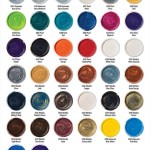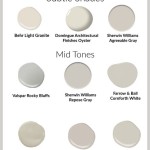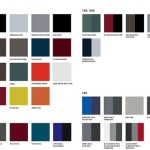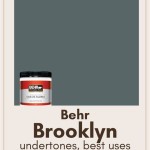What Color to Paint an Exterior Door Frame: A Comprehensive Guide
The exterior door frame, often an overlooked element in home design, plays a vital role in both the aesthetic appeal and structural integrity of a building. It serves as the crucial transition between the door itself and the surrounding exterior wall, and the color chosen for its paint can significantly impact the overall curb appeal and perceived style of a property. Selecting the right paint color for an exterior door frame involves careful consideration of numerous factors, ranging from the existing color palette of the house to the desired architectural style and the practical implications of weather exposure and maintenance.
This article provides a comprehensive guide to navigating the complexities of exterior door frame paint color selection. It delves into the key considerations, stylistic approaches, and practical advice necessary to make an informed decision that enhances both the beauty and longevity of this essential architectural feature.
Key Considerations Before Choosing a Color
Several key factors need careful evaluation before committing to a specific paint color for an exterior door frame. Neglecting these considerations can lead to a final result that clashes with the existing aesthetic or proves impractical in the long run.
Architectural Style: The architectural style of the house is paramount. A Victorian home, for example, often benefits from rich, saturated colors like deep reds, greens, or blues, sometimes accented with contrasting trim. Conversely, a modern or contemporary house frequently favors neutral tones such as grays, whites, or blacks, perhaps with a pop of color on the door itself. A craftsman-style home often looks best with earthy tones like browns, greens, or muted reds, reflecting a natural aesthetic. Matching the door frame color to the architectural style ensures a cohesive and harmonious visual effect.
Existing Color Palette: The existing color palette of the house, including the siding, trim, roof, and landscaping, must be taken into account. The door frame color should complement or contrast effectively with these existing elements. A color wheel can be a valuable tool for understanding color relationships and identifying complementary or analogous colors. For instance, if the house is painted in a warm neutral tone like beige, a complementary color like a muted blue or green can create an attractive contrast. Alternatively, an analogous color, such as a slightly darker shade of beige or a warm brown, can create a more subtle and unified look. It is crucial to avoid colors that clash or compete with the existing palette, as this can create a jarring and unappealing visual effect.
Door Color: The color of the door itself is a significant factor in determining the appropriate frame color. The frame can either blend seamlessly with the door or provide a contrasting border that highlights the entrance. If the door is a bold color, such as red or yellow, a neutral frame color like white, gray, or black can create a balanced and sophisticated look. Conversely, if the door is a neutral color, a bolder frame color can add a touch of personality and visual interest. It is important to consider the overall effect desired and choose a frame color that either complements or contrasts with the door in a harmonious way.
Surrounding Environment: The surrounding environment, including the landscaping and neighboring houses, can also influence the choice of door frame color. A brightly colored frame might be appropriate for a house surrounded by lush greenery, while a more subdued color might be better suited for a house in a more urban or densely populated area. The color of neighboring houses should also be considered to ensure that the chosen color complements the overall streetscape. It is important to create a cohesive and visually appealing exterior that blends in with the surrounding environment while still reflecting the homeowner's personal style.
Stylistic Approaches to Door Frame Color
Beyond the practical considerations, several stylistic approaches can be adopted when choosing a door frame color. These approaches range from classic and traditional to bold and contemporary, allowing homeowners to express their personal style and create a unique visual impact.
Monochromatic Schemes: A monochromatic color scheme involves using different shades and tints of the same color. This approach creates a subtle and sophisticated look, often resulting in a calm and unified aesthetic. For example, if the house is painted in a light gray, the door frame could be painted in a darker shade of gray or a slightly tinted gray with a hint of blue or green. Monochromatic schemes are particularly effective for modern and minimalist homes, as they create a sense of understated elegance. However, it is important to ensure that there is sufficient contrast between the different shades to avoid a flat and uninteresting look.
Contrasting Frames: A contrasting frame can be used to create a bold and dramatic effect. This approach involves choosing a color that is significantly different from the door and the surrounding siding. For example, a white house with a black door could have a bright red or yellow door frame to add a pop of color and visual interest. Contrasting frames are particularly effective for highlighting the entrance and drawing attention to the door. However, it is important to choose colors that complement each other and avoid clashing colors that can create a jarring and unpleasant effect.
Matching Frames: A matching frame involves painting the door frame the same color as the door. This approach creates a seamless and unified look, often resulting in a classic and understated aesthetic. Matching frames are particularly effective for traditional homes or for situations where the door is already a focal point. This approach can also be used to create a sense of continuity between the door and the surrounding wall, making the entrance appear larger and more inviting. However, it is important to ensure that the door and frame are both in good condition and that the paint is applied evenly to avoid a sloppy or unfinished look.
Neutral Frames: Neutral colors, such as white, gray, beige, and black, are versatile and timeless choices for door frames. They complement a wide range of door colors and architectural styles, providing a classic and understated look. White frames are particularly popular for their clean and crisp appearance, while gray frames offer a more modern and sophisticated touch. Beige frames provide a warm and inviting feel, while black frames create a bold and dramatic statement. Neutral frames are a safe and reliable choice for homeowners who are unsure about which color to choose, as they are unlikely to clash with the existing color palette or go out of style.
Practical Considerations: Paint Type and Durability
Beyond color selection, the practical aspects of paint type and durability are crucial for ensuring the longevity and aesthetic appeal of the exterior door frame. The harsh outdoor environment demands a paint that can withstand the elements and maintain its color and integrity for years to come.
Paint Type: The type of paint used for an exterior door frame should be specifically formulated for outdoor use. Acrylic latex paints are the most common and suitable choice due to their durability, flexibility, and resistance to fading, cracking, and mildew. Oil-based paints, while offering excellent adhesion and a hard finish, are less environmentally friendly and more prone to cracking and fading over time. Acrylic latex paints are also easier to clean and maintain, making them a practical choice for busy homeowners.
Sheen Level: The sheen level of the paint also plays a significant role in its appearance and durability. Semi-gloss or gloss finishes are generally recommended for exterior door frames, as they are more resistant to moisture and dirt and easier to clean than matte or satin finishes. A higher sheen level also provides a more durable and protective coating, which is essential for withstanding the harsh outdoor elements. However, it is important to note that higher sheen levels can also highlight imperfections in the surface, so proper preparation and priming are essential.
Priming: Proper priming is essential for ensuring the adhesion and longevity of the paint. A high-quality exterior primer should be applied to the door frame before painting, especially if the surface is bare wood or has been previously painted. Priming helps to seal the surface, prevent moisture from penetrating the wood, and provide a smooth and even base for the paint. It also helps to improve the adhesion of the paint and prevent it from peeling or chipping over time. Choosing a primer that is specifically formulated for exterior use and compatible with the chosen paint is crucial for achieving a long-lasting and durable finish.
Durability and Weather Resistance: The paint should be durable and weather-resistant, capable of withstanding exposure to sunlight, rain, wind, and temperature fluctuations. Look for paints that are specifically formulated for exterior use and that offer UV protection to prevent fading and cracking. The paint should also be resistant to mildew and mold growth, especially in humid climates. Choosing a high-quality paint that is designed to withstand the harsh outdoor elements will ensure that the door frame maintains its color and integrity for years to come, reducing the need for frequent repainting and maintenance.
Thorough planning and careful consideration of these factors will contribute to a successful outcome when selecting a color to paint an exterior door frame, transforming this architectural feature into an element that enhances the overall beauty and value of the home.
Paint Your Front Door The Right Way Beckwith S Treasures

Exterior Paint Ideas For Doors And Trim Protek Painters

Front Door Paint Colors Sherwin Williams

Should All Exterior Doors Be The Same Color Door Colors French

Do I Paint The Trim Around Front Door Same Color As

2024 Best Front Door Colors For Every House Color To Your Homeadvisor

13 Favorite Front Door Colors Paint Exterior For House Painted Doors

The 6 Top Front Door Paint Colors That Even Your Hoa Will Love Kylie M Interiors

How We Made Our Front Door Look Bigger With Paint A Pretty Happy Home

50 Charming Front Door Colors That Welcome Guests Into Your Home
Related Posts








